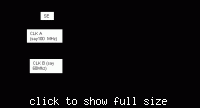raviram80
Member level 3
Hi All,
I have a general question on deciding the scan clocks? If there are 10 system clocks for example, how do we decide which clocks to use for scan?
What is the criteria for deciding that? Is it like a scan clock should cover certain percentage of flops in the design?
Please let me know,
Thanks,
Ravi
I have a general question on deciding the scan clocks? If there are 10 system clocks for example, how do we decide which clocks to use for scan?
What is the criteria for deciding that? Is it like a scan clock should cover certain percentage of flops in the design?
Please let me know,
Thanks,
Ravi
